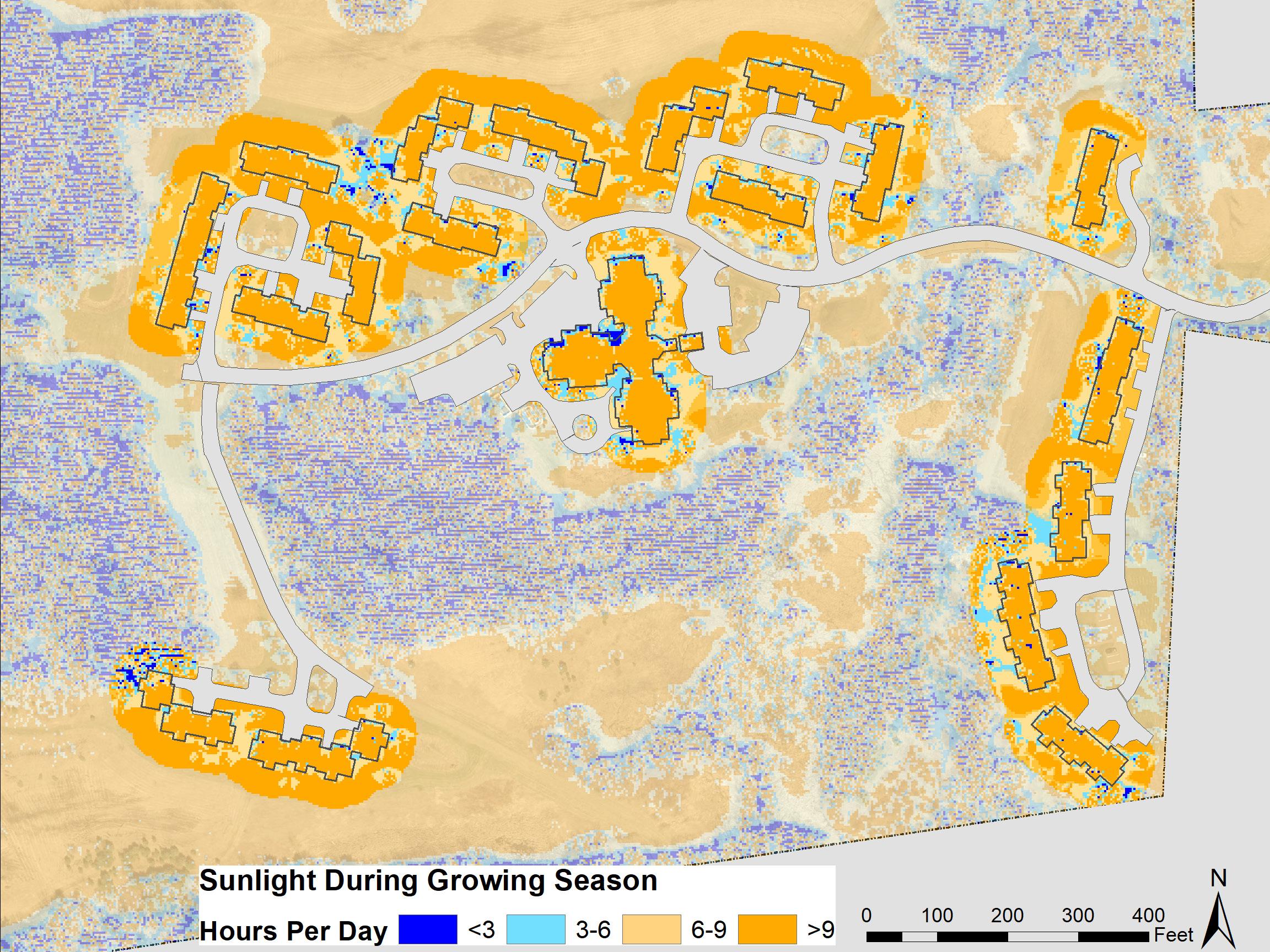Both Lathrop residents and administration have expressed a desire to add solar energy to the existing townhome roofs as well as the roofs of all future townhomes. All roofs at Lathrop receive enough sun to produce significant amounts of solar energy. About half of the townhomes have south-facing roofs, making them well oriented to absorb sunlight. There is also potential to add solar on the roof of the Inn and most of the parking areas.
The absence of shade from the developed area is worrisome in light of climate change. As temperatures increase due to climate change, extreme heat will pose a great threat to public health. This is of particular concern in a retirement community where residents may be more susceptible to heat stroke.
One townhome at Lathrop uses an average of 360 kilowatt hours/month or 12 kilowatt hours/day of electricity. According to MIT School of Engineering, the average home uses about 48 kilowatt hours/ day. Townhomes likely use less than the average home due to their smaller size and shared walls. Assuming 12 kWh/day per townhome, using 15 to 21% efficiency for solar panels (the current range on the market), and an average solar insolation of 4 kWh/meters squared/day in Massachusetts, each townhome unit would need between 14 and 20 square meters of PV panels to produce all of its electricity to meet annual needs.
Sun, Shade, PV, and Energy
Most of the developed area is in full sun, receiving over nine hours of direct sunlight per day during the growing season, defined here as April 1st to October 31st. A few smaller areas, notably behind the Huckleberry and Teaberry homes, receive between six and nine hours of sunlight per day. There are several small pockets of deep shade (under three hours per day) under larger vegetation, and a few small pockets of light shade (three to six hours per day). Because most of the residential area is sunny, plants that thrive in an open area, such as meadow species, could be planted in most yards. Most yards may also be suitable for small-scale food production. Of course, sun patterns could change if tree canopy is increased. Areas under existing trees could provide small pockets for shade-loving plants.
Spring 2020
Solar (PV) Potential
Northampton and Easthampton, Massachusetts
Sun and Shade
Lathrop Retirement Community Landscape Master Plan
ENERGY USE AND ENERGY PRODUCTION THE CONWAY SCHOOL POTENTIAL Eli Bloch and Allison Mason
Energy Use & Energy Production Potential
11
Not for construction. Part of a student project and not based on a legal survey.
















